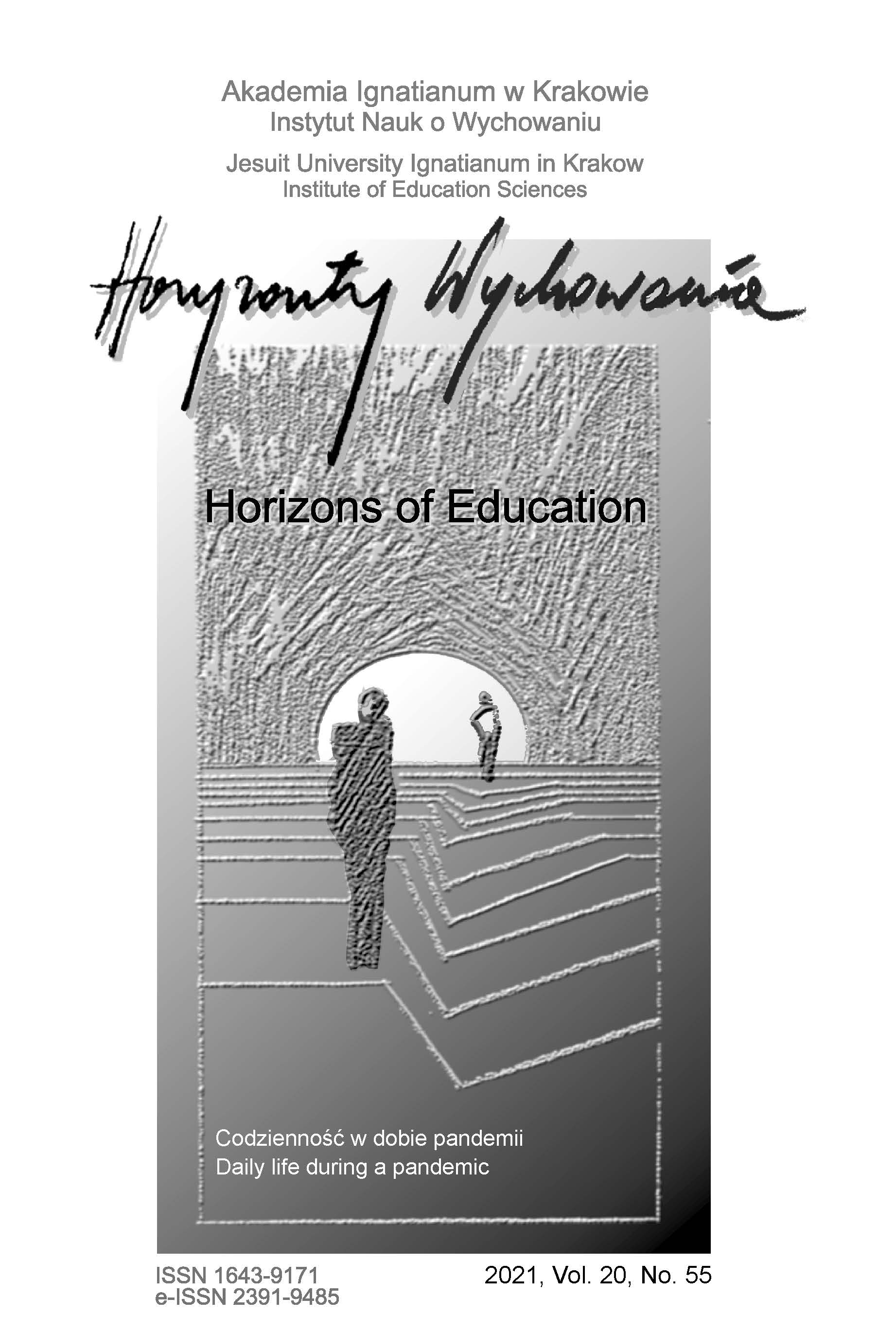Conceptual Metaphors Related to Mental Health During the COVID‑19 Pandemic in Poland
Abstract
RESEARCH OBJECTIVE: The aim of the paper is to analyse linguistic data from a public discourse on mental health during the COVID‑19 pandemic. The data come from interviews concluded with psychologists/psychiatrists, published in newspapers/magazines or online.
THE RESEARCH PROBLEM AND METHODS: The article fills a gap in public discourse research on mental health during the SARS‑CoV‑2 virus epidemic by adopting the theoretical and methodological assumptions of cognitive linguistics that the metaphor manifested in language is essentially conceptual in nature.
THE PROCESS OF ARGUMENTATION: The subject of the research are conceptual metaphors used by psychologists and psychiatrists in communicating expert knowledge in the public discourse. The article examines this issue in the context of developing the health competences of the society in order to counteract mental disorders caused by the pandemic.
RESEARCH RESULTS: The results of the analysis indicate that correctly selected metaphors fa‑ cilitates the process of drawing inference about the cause-effect relations between the occurrence of an epidemic situation and the occurrence of mental disorders in various age groups of Polish society.
CONCLUSIONS, INNOVATIONS, AND RECOMMENDATIONS: The results of the current analysis can form the basis for further research on the cognitive foundations of effective ways of disseminating the expert knowledge about mental health, with particular consideration placed on those areas of epidemic daily life that can be easily disinformed.
References
Craig, D. (2020). Pandemic and its metaphors: Sontag revisited in the COVID‑19 era. European Journal of Cultural Studies, 23(6), 1025‑1032. doi.org/10.1177/1367549420938403
Demjén, Z. i Semino, E. (2016). Using metaphor in healthcare. W: Z. Demjén i E. Semino (red.), The Routledge handbook of metaphor and language (s. 385‑399). Routledge.
Doroszewska, A., Dudek, D., Jabłoński, M., Kłosińska, K., Murawiec, S. i Sobczak, B. (2021). Wrażliwi na słowa. Wrażliwi na ludzi. Rekomendacje dotyczące językaniedyskryminującego osób z zaburzeniami psychicznymi. Psychiatria, 18(2), 163‑167.
Evans, V. (2007). Leksykon językoznawstwa kognitywnego. Universitas.
Gambin, M. (red.). (2021). Pandemia COVID‑19 w Polsce. Perspektywa psychologiczna. 24 raporty z badań ekspertów. https://covid.psych.uw.edu.pl/wp-content/uploads/sites/50/2021/03/raporty-covid-2020.pdf
Gibbs, R. (2016). Metaphor, language, and dynamical systems. W: Z. Demjén i E. Semino (red.), The Routledge handbook of metaphor and language (s. 56‑69). Routledge.
Gibbs, R. (2017). Metaphor wars. Cambridge.
Heitzman, J. (2020). Wpływ pandemii COVID‑19 na zdrowie psychiczne. Psychiatria Polska, 54(2), 187‑198. DOI: https://doi.org/10.12740/PP/120373
Jaspal, R. i Nerlich, B. (2020). Social representations, identity threat, and coping amid COVID‑19. Psychological Trauma: Theory, Research, Practice, and Policy, 12(S1), S249‑S251. https://doi.org/10.1037/tra0000773
Kövecses, Z. (2011). Język, umysł, kultura. Praktyczne wprowadzenie (A. Kowalcze‑Pawlik i M. Buchta, tłum.). Universitas.
Krawczyk‑Wasilewska, V. (2020). COVID‑19 jako paradygmat choroby globalnej. Lud, 104, 155‑184.http://dx.doi.org/10.12775/lud104.2020.07
Makowska, M. (2021). Język i obraz wobec koronawirusa. Forum Lingwistyczne, 8, 1‑14. http://doi.org/10.31261/FL.2021.08.09
Nutbeam, D. (1998). Health promotion glossary. Health Promotion International, 13(4), 349‑364.
Semino, E. (2021). Not Soldiers but Fire‑fighters‑Metaphors and Covid‑19. Health Communication, 36(1), 50‑58. DOI: 10.1080/10410236.2020.1844989
Tay, D. (2016). Using metaphor in healthcare: mental health. W: Z. Demjén i E. Semino (red.), The Routledge handbook of metaphor and language (s. 371‑384). Routledge.
Thibodeau, P.H., Hendricks, R.K. i Boroditsky, L. (2017). How linguistic metaphor scaffolds reasoning. Trends in Cognitive Sciences, 21(11), 852‑863. https://doi.org/10.1016/j.tics.2017.07.001
Wallis, P. i Nerlich, B. (2005). Disease metaphors in new epidemics: the UK media framing of the 2003 SARS epidemic. Social Science & Medicine, 60(11), 2629‑2639. https://doi.org/10.1016/j.socscimed.2004.11.031
Wicke, P. i Bolognesi, M. (2020). Framing COVID‑19: How we conceptualize and discuss the pan‑demic on Twitter. PLoS ONE, 15(9), e0240010. https://doi.org/10.1371/journal.pone.0240010
Wojtukiewicz, A. (2020). Pandemia COVID‑19 – metaforyka w głównych wydaniach polskich dzienników telewizyjnych. com.press, 3(2), 50‑67.
Zbróg, Z. i Zbróg, P. (2016). Reprezentacje społeczne jako nośniki pamięci zbiorowej. Horyzonty Wychowania, 15(36), 1127. DOI:10.17399/HW.2016.153601
Copyright (c) 2021 HORIZONS OF EDUCATION

This work is licensed under a Creative Commons Attribution-NoDerivatives 4.0 International License.
Authors who publish in this journal agree to the following terms:
- Authors retain the copyright to their work while granting the journal the right of first publication. The work will be simultaneously licensed under a CC BY-ND license, which permits others to share the work with proper credit given to the author and the original publication in this journal.
- Authors may enter into additional, non-exclusive agreements for the distribution of the published version of the work (e.g., posting it in an institutional repository or publishing it in another journal), provided that the original publication in this journal is acknowledged.
We allow and encourage authors to share their work online (e.g., in institutional repositories or on personal websites) both before and during the submission process, as this can foster beneficial exchanges and lead to earlier and increased citations of the published work. (See The Effect of Open Access). We recommend using any of the following academic networking platforms:





